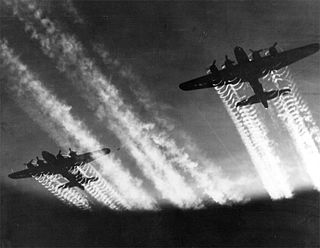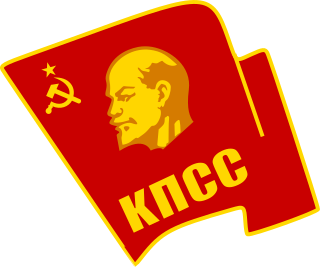
Leninism is the political theory for the organisation of a revolutionary vanguard party and the achievement of a dictatorship of the proletariat as political prelude to the establishment of socialism. Developed by and named for the Russian revolutionary Vladimir Lenin, Leninism comprises socialist political and economic theories, developed from Marxism and Lenin's interpretations of Marxist theories, for practical application to the socio-political conditions of the Russian Empire of the early 20th century.
Trotskyism is the theory of Marxism as advocated by the Russian revolutionary Leon Trotsky. Trotsky identified as an orthodox Marxist and Bolshevik–Leninist. He supported founding a vanguard party of the proletariat, proletarian internationalism and a dictatorship of the proletariat based on working class self-emancipation and mass democracy. Trotskyists are critical of Stalinism as they oppose Joseph Stalin's theory of socialism in one country in favor of Trotsky's theory of permanent revolution. Trotskyists also criticize the bureaucracy that developed in the Soviet Union under Stalin.

Alexei Maximovich Peshkov, primarily known as Maxim Gorky, was a Russian and Soviet writer, a founder of the socialist realism literary method, and a political activist. He was also a five-time nominee for the Nobel Prize in Literature. Around fifteen years before success as a writer, he frequently changed jobs and roamed across the Russian Empire; these experiences would later influence his writing. Gorky's most famous works were The Lower Depths (1902), Twenty-six Men and a Girl (1899), The Song of the Stormy Petrel (1901), My Childhood (1913–1914), Mother (1906), Summerfolk (1904) and Children of the Sun (1905). He had an association with fellow Russian writers Leo Tolstoy and Anton Chekhov; Gorky would later mention them in his memoirs.
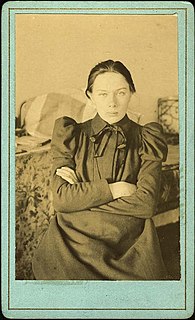
Nadezhda Konstantinovna Krupskaya was a Russian Bolshevik and the wife of Vladimir Lenin.
Lenin's Testament is the name given to a document dictated by Vladimir Lenin in the last weeks of 1922 and the first week of 1923. In the testament, Lenin proposed changes to the structure of the Soviet governing bodies. Sensing his impending death, he also gave criticism of Bolshevik leaders Zinoviev, Kamenev, Trotsky, Bukharin, Pyatakov and Stalin. He warned of the possibility of a split developing in the party leadership between Trotsky and Stalin if proper measures were not taken to prevent it. In a post-script he also suggested Joseph Stalin be removed from his position as General Secretary of the Russian Communist Party's Central Committee. Isaac Deutscher, biographer of both Trotsky and Stalin, wrote that "The whole testament breathed uncertainty".
The Leninist League was a communist political party in the United States. It published a newspaper called "In Defense of Bolshevism".

Joseph Stalin was the General Secretary of the Communist Party of the Soviet Union's Central Committee from 1922 until his death in 1953. In the years following Lenin's death in 1924, he rose to become the authoritarian leader of the Soviet Union.
Joseph Stalin was the General Secretary of Central Committee of the Communist Party of the Soviet Union from 1922 until his death in 1953. In the years following the death of Vladimir Lenin in 1924, Stalin rose to become the leader of the Soviet Union.

Yemelyan Mikhailovich Yaroslavsky was an ethnic Jewish Russian Bolshevik Revolutionary, Communist Party Member, Journalist, and Historian.

Marxism and the National Question is a short work of Marxist theory written by Joseph Stalin in January 1913 while living in Vienna. First published as a pamphlet and frequently reprinted, the essay by the ethnic Georgian Stalin was regarded as a seminal contribution to Marxist analysis of the nature of nationality and helped to establish his reputation as an expert on the topic. Stalin would later become the first People's Commissar of Nationalities following the victory of the Bolshevik Party in the October Revolution of 1917.

Grigory Yevseyevich Zinoviev, born Hirsch Apfelbaum, known also under the name Ovsei-Gershon Aronovich Radomyslsky, was a Bolshevik revolutionary and a Soviet Communist politician.

Lev Borisovich Kamenev was a Bolshevik revolutionary and a prominent Soviet politician. He was one of the seven members of the first Politburo, founded in 1917 to manage the Bolshevik Revolution: Lenin, Zinoviev, Kamenev, Trotsky, Stalin, Sokolnikov and Bubnov.
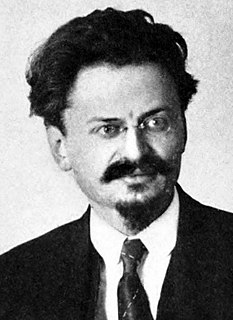
Lessons of October is a polemical essay of about 60 printed pages in length by Leon Trotsky, first published in Moscow in October 1924 as the preface to the third volume of his Collected Works. The essay was harshly critical of the purported revolutionary failings of Grigory Zinoviev and Lev Kamenev, two key members of the collective leadership which briefly ruled Soviet Russia in the months after the death of V.I. Lenin. Publication of the essay was used as a pretext for the Soviet leadership to isolate and attack Trotsky, whom the leadership mutually perceived as a threat to accede to supreme power.
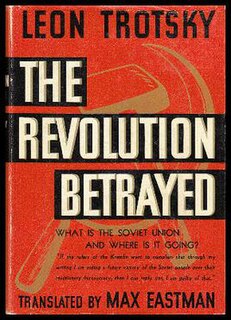
The Revolution Betrayed: What Is the Soviet Union and Where Is It Going? is a book published in 1937 by the exiled Soviet Bolshevik leader Leon Trotsky. This work analyzed and criticized the course of historical development in the Soviet Union following the death of Lenin in 1924 and is regarded as Trotsky's primary work dealing with the nature of Stalinism. The book was written by Trotsky during his exile in Norway and was originally translated into Spanish by Victor Serge. The most widely available English translation is by Max Eastman.

Revolutionary terror refers to the institutionalized application of force to counterrevolutionaries, particularly during the French Revolution from the years 1793 to 1795. The term "Communist terrorism" has also been used to describe the revolutionary terror, from the Red Terror in the Russian Soviet Federative Socialist Republic (RSFSR) to the reign of the Khmer Rouge and others. In contrast, "reactionary terror", such as White Terror, has been used to subdue revolutions.
Socialism in one country was a theory put forth by Joseph Stalin and Nikolai Bukharin in 1924 which was eventually adopted by the Soviet Union as state policy. The theory held that given the defeat of all the communist revolutions in Europe in 1917–1923 except Russia, the Soviet Union should begin to strengthen itself internally. This turn toward national communism was a shift from the previously held position by classical Marxism that socialism must be established globally. However, proponents of the theory argue that it contradicts neither world revolution nor world communism. The theory was in opposition to Leon Trotsky's theory of permanent revolution and Communist Left theory of World Revolution.

Alexander Pavlovitch Serebrovsky was a Russian revolutionary and Soviet petroleum and mining engineer nicknamed the "Soviet Rockefeller".
Charles Malamuth was an American journalist, writer, and translator known as an "expert in Slavic languages," "Russian expert," and "anticommunist. His best known over the years as translator is Stalin: An Appraisal of the Man and His Influence by Leon Trotsky (1941) for which Soviet communists attacked him as a Trotskyite in the 1940s and Trotskyites attacked him as an anticommunist in the 2010s.

Foundations of Leninism is a 1924 collection by Joseph Stalin of nine lectures he delivered at Sverdlov University that year. It was published by the Soviet newspaper, Pravda.



